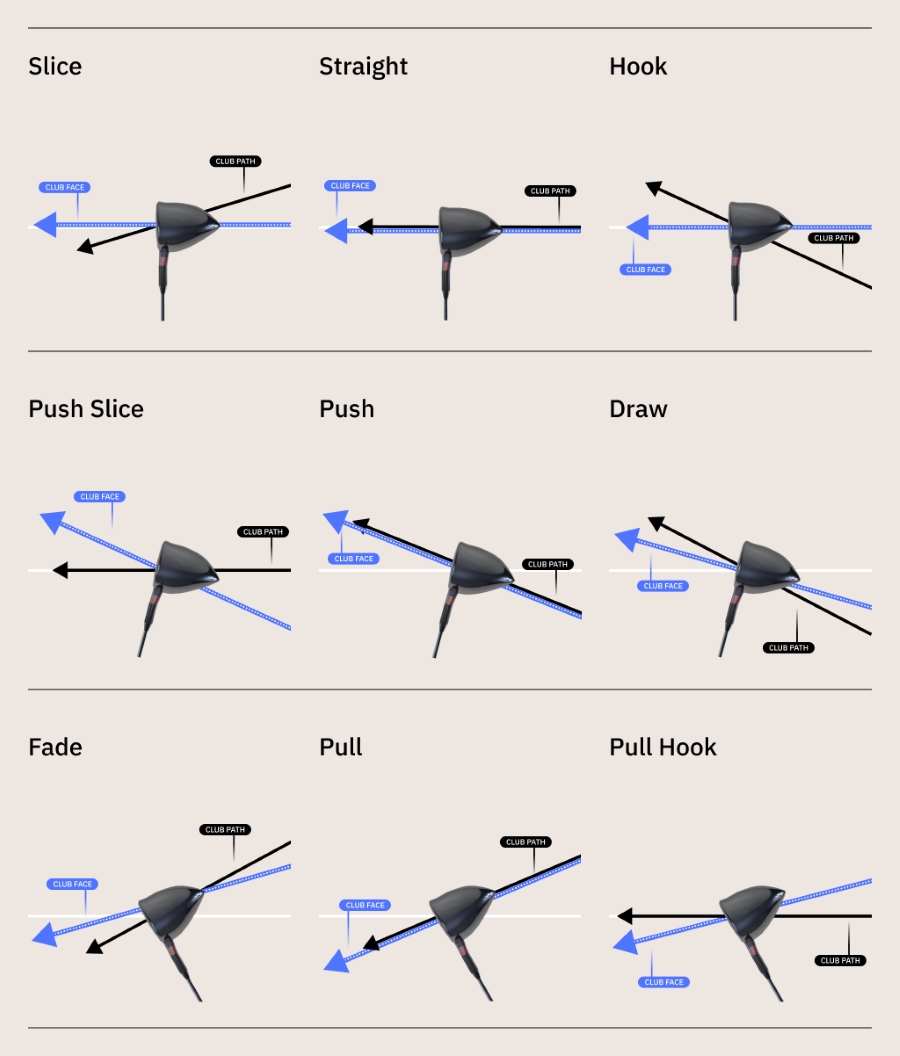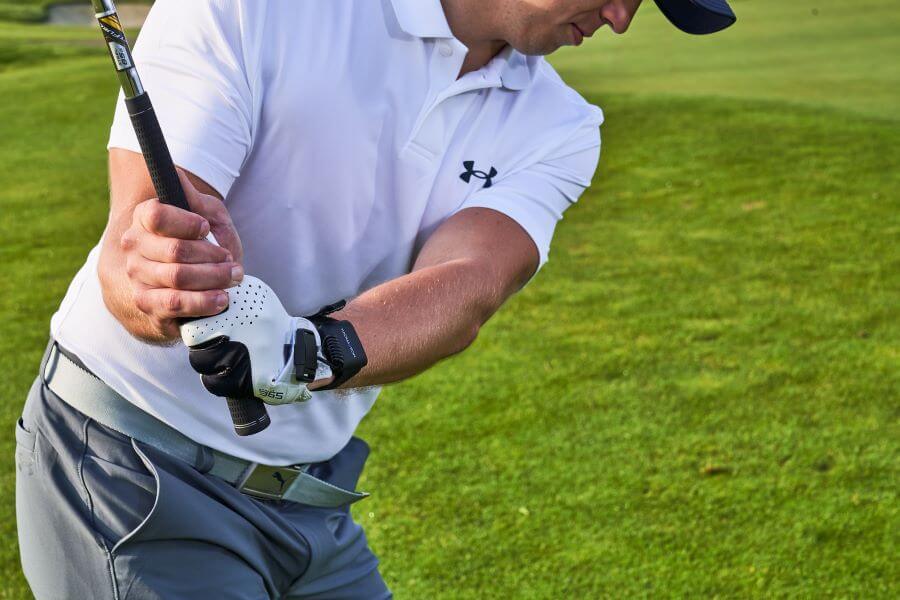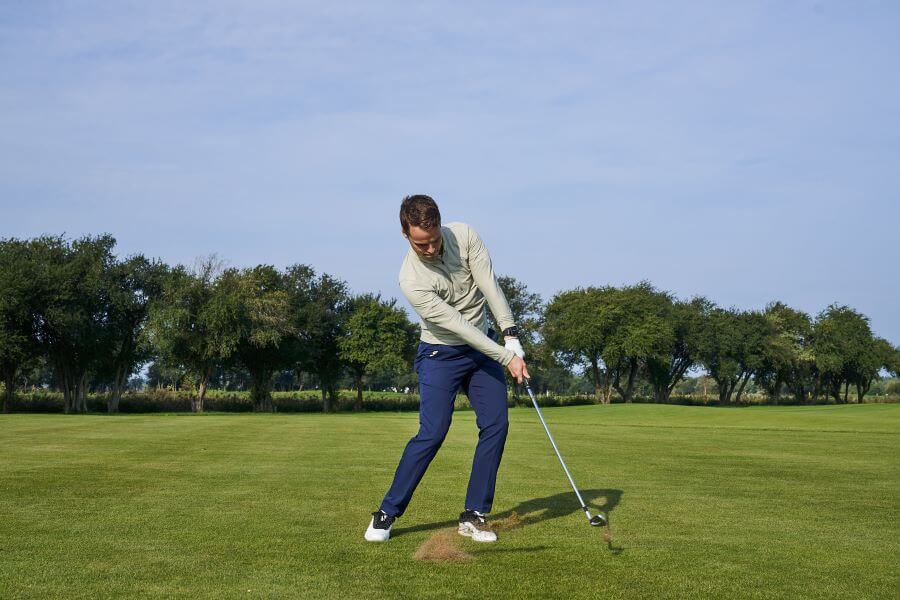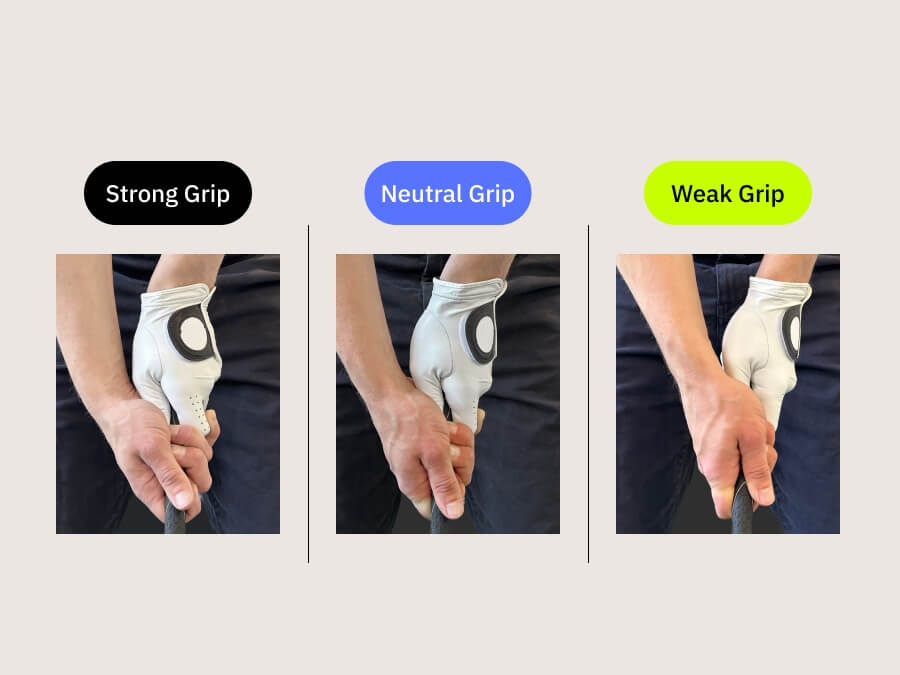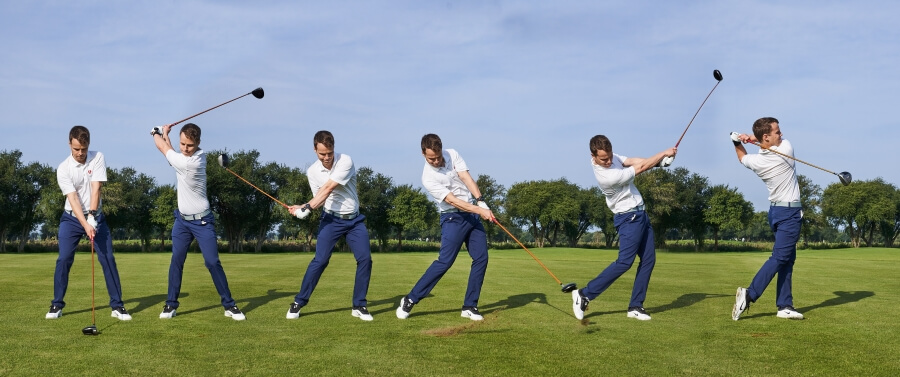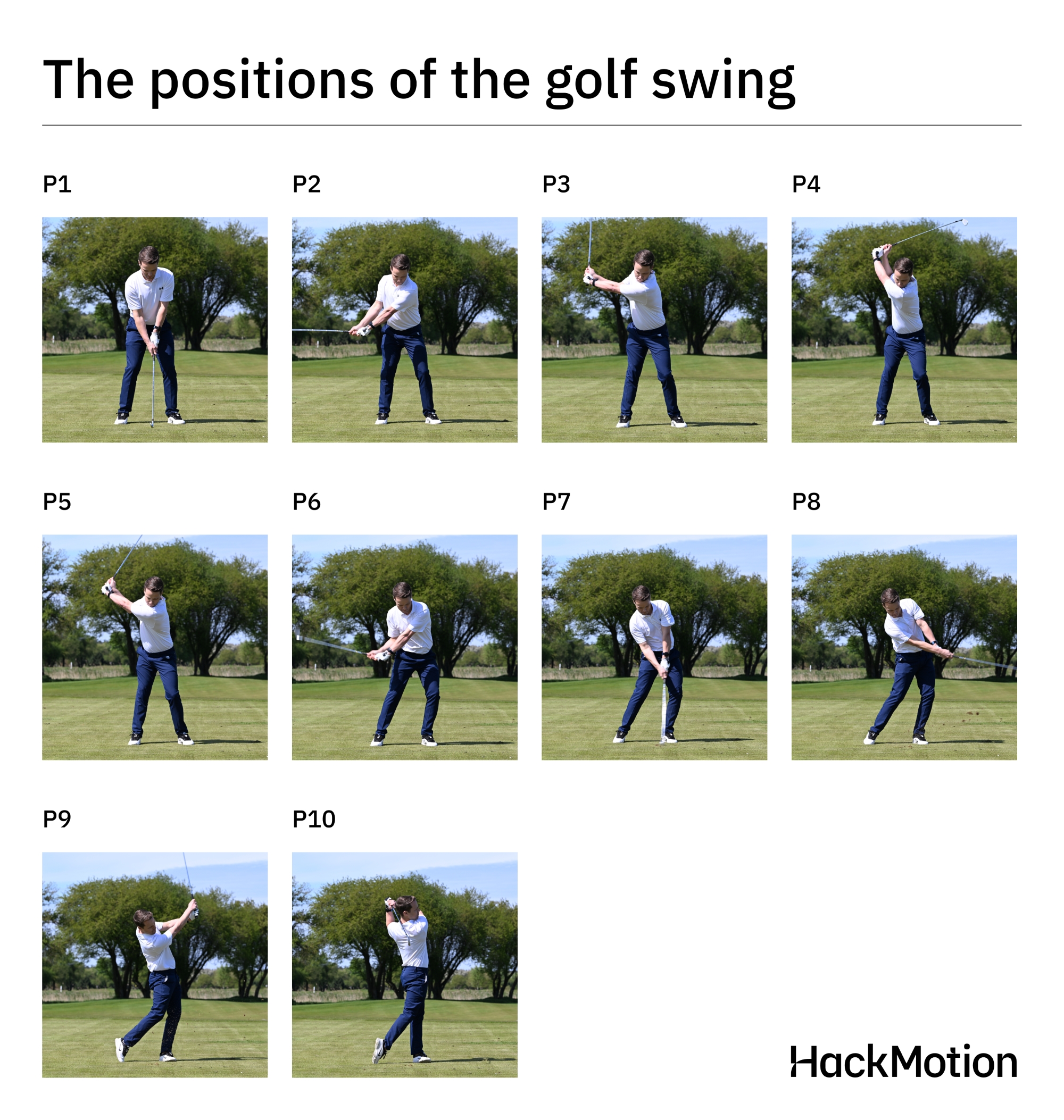Different Types of Golf Swings (Is it Worth Knowing More Than One?)
There are hundreds, maybe thousands, of ways to swing a golf club. However, most of these ways can be broken down into 5 different types of golf swings.
Is there a perfect golf swing?
Not really.
However, there are key features we see in all different types of golf swings that need to be in place to hit solid shots. I’ll take you through the different types of golf swings and give you some tips for building a swing that works best for your game.
Different Types of Golf Swings (Key Takeaways)
If you don’t have time to investigate all of these golf swings right now, here are the most important takeaways.
- Take some time to learn what type of swing you have; when you run into issues, the troubleshooting process will be considerably easier.
- The type of golf swing you have is not just about personal preference but also natural ability, flexibility, body size, and movement.
- All great golf swings have a balanced and proper setup, good timing, tempo, and wrist action throughout the entire swing.
If your current swing is not working for you, there is no need to reinvent the wheel; start with subtle changes and transform your golf swing piece by piece
Contents
Different Types of Golf Swings
There are five basic types of golf swings.
However, it’s important to remember that in addition to these types of golf swings, there are hundreds, if not thousands, of ways to swing a golf club.
To make things easier for both golfers and instructors, these different types of golf swings can be broken down into the following:
- Stack & Tilt
- Hands & Arms Swing
- Hold Off Swing
- Rotational/Traditional Swing
- One Plane Swing
Let’s break these down further so you can start incorporating some of this into your own golf game.
Stack and Tilt
The stack and tilt golf swing is a technique developed by Mike Bennett and Andy Plummer, both PGA Professionals.
As golf professionals, Bennett and Plummer noticed that golfers struggled with transitioning weight in the golf swing. The concept allows players to feel a bit of extra weight on their lead foot during the backswing.
For many years the traditional concept was to transfer this weight, so the stack and tilt swing brought a shakeup to the world of golf.
The Stack and Tilt are all about torque and creating power in a smart way, as opposed to adding too much movement.
I started using something similar to the stack and tilt when I hit shots with my wedges, and it helps me create plenty of speed and high levels of spin.
Another key element of the stack and tilt swing is the use of the upper body to initiate the downswing rather than the lower body, which is common in traditional swing methods.
Some golfers have found success using the stack and tilt swing, but it’s not universally accepted, and like any method, it’s only suitable for some.
Working with a professional instructor is important to assess if this is appropriate for you and that you are doing it correctly.
Pros
- More consistent strike.
- Less movement.
- Great for someone that struggles to transfer their weight on the backswing as well as the downswing.
Cons
- It is difficult to grasp the concept at first.
- Very few tour players use this technique.
- This can result in a reverse pivot if not done properly.
Hands and Arms Swing
The hands and arms swing is popular with high handicappers, beginners, and elderly golfers.
To put it plainly, this is not a good way to swing the club.
For elderly golfers and people with rotational concerns, this could be the only effective way to swing, as your body might be restricting your movements.
High handicaps and beginners swing this way as they don’t understand how to actually rotate during the swing or don’t realize that you have to.
To many new players, the hands and arms feel as though they are the creators of power in the swing.
They are not!
The body should be incorporated into the swing. For players that want more consistency and better on-course performance, the hands and arms swing is not the one to choose.
I don’t like this way of swinging because it provides no consistent power and promotes inconsistencies in the strike.
These are two critical factors when it comes to having a good swing and shooting good scores.
Pros
- If you have rotational issues, then this technique could work for you.
- It can help players develop a better feel, which is a positive.
Cons
- Lack of power.
- Inconsistency in the shots.
- Difficult to make solid contact with the ball.
Hold Off Swing
Although the hold off swing may not be something that you would use consistently throughout the entire course, it deserves a spot on the list of different types of golf swings.
Players that use a hold off swing have to have good body awareness and feel things such as wrist motion and functionality.
The Hold Off Swing swing requires you to be quite strong and flexible. It creates a lot of power because you hold the face angle for longer periods creating a lot of lag. This late release is your power source.
When in slow motion, it almost looks like you are holding off the face; the key is to feel very strong through impact and hold off until the last second to release the club.
To master this method, you need to take the club face back in a closed position (the toe of the club should be at an angle when the club is parallel with the ground on your backswing).
This is where your strength and flexibility kick in; you need to rotate and have a bowed wrist at the top of your backswing.
To initiate your downswing start with your hips; this is where the rotation starts again. Rotating your hips extremely fast while holding the clubface off is possible because of the bowed wrist at the top of the swing.
This swing technique does require strength, flexibility, and a lot of practice. I would only recommend someone to try this if they are willing to put the time in.
I like the idea of learning how to hit shots like this because it can be a great way to control ball flight, but there may be better methods for everyday golf.
Pros
- It can be highly consistent.
- Promotes power.
- It can be good to learn about certain types of shots.
Cons
- Requires strength and flexibility.
- It can go very wrong if you don’t learn the technique correctly.
- Takes a lot of practice to master.
Rotational/Traditional Swing
The traditional swing is the swing you see most golfers use, especially those that have made it to the PGA Tour.
Now, they might all have their own slight differences, but the fundamentals are the same.
Golfers use their bodies to rotate and turn throughout the swing, creating better rotation and improved performance. Most golfers find the traditional swing to be the easiest to learn and master.
To start off a traditional swing, you need to have a solid base, a good grip, and a setup is the key to any good golf swing. The slight variances come from personal feel, abilities, physical attributes/limitations, and preferences. But, all in all, the technique is the same.
To perfect this swing technique, you will need to have a one-piece takeaway with your shoulders, arms, and hands.
From about two/three feet from the ball, you will start rotating your hips and start to hinge your wrists; having the toe of your club pointing straight up or slightly downward is great.
You will need to transfer your weight towards your trail side on the backswing. Starting the downswing with your hips, you will transfer your weight back onto your lead side and release the club at the bottom.
Sounds simple, right?
Easier said than done, but I guess that’s what makes golf so hard.
Pros
- It is the “easiest” way to swing the golf club.
- Creates a lot of power.
- Promotes consistency.
- Used by most professionals.
Cons
- Like all golf, it does take a lot of practice.
- It can be an issue for those that struggle to rotate well in the swing.
One Plane Swing
As a golfer, you may have heard that your swing was on the plane or not on the plane. The plane is the line that you should be swinging the club on.
If you stand at the ball at setup and look at the angle of the shaft, this is what the swing plane will likely be. The one-plane swing golfers take the club back on the same plane they swing down. There is no rerouting of the club head or getting it back on track; it simply stays on the plane.
This is not a popular swing as you need to be quite strong to create power in the swing. The one-plane swing is supposed to promote consistency as there are fewer moving parts.
To start, your posture needs to be slightly more upright than usual. Your hands also need to be in a slightly higher position. Your full backswing needs to be on ‘one plane’; at the top of the swing, the club is not dropping into place.
If you want to see an opposite approach to the one-plane swing, take a look at Jim Furyk, he clearly has two planes that are easy to see. With the one-plane swing, you need to have a lot of power on your downswing to maintain a square clubface, and you need to rotate hard to get power.
Pros
- More consistency.
- Fewer parts to go wrong.
- It can be easy to get the timing in place.
Cons
- You need to be strong to create power.
- It takes a lot to perfect the technique.
- Have to make sure that the swing plane is the proper one.
Wrist Action in All Different Types of Golf Swings
As you look through the five different types of golf swings, you will notice that there are similarities between all of them. For instance, even if your setup is adjusted for a stack and tilt vs. a traditional swing, you will notice that great players have balance, control, and consistency.
These things don’t change.
After analyzing more than 1,000,000 golf swings, we have also found that wrist action stays relatively consistent throughout the better golfers’ swings. When your wrist action follows the pattern that we see in professionals, regardless of your swing type, you hit better (longer and straighter) golf shots.
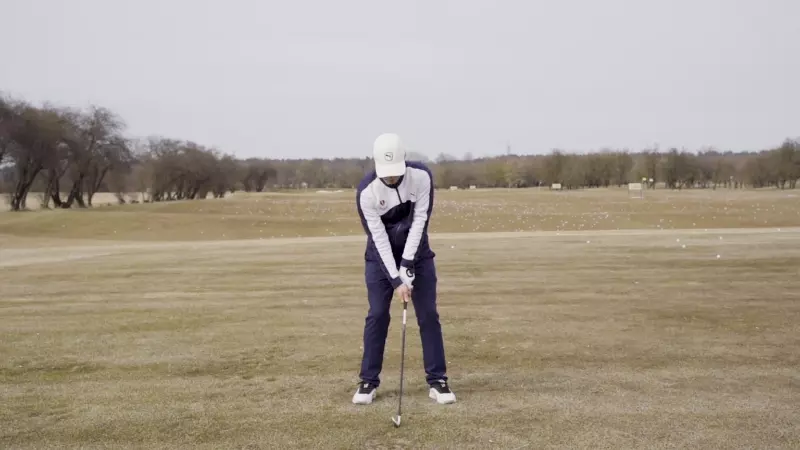
Here is what you should know about that pattern:
- Wrist positions at setup will vary based on swing type and the physical characteristics of the player.
- From setup to the top of the backswing, the very little extension should be added to the lead wrist position (i.e., do not cup the wrist).
- From the top of the backswing, the first move of better golfers is to start squaring up the clubface; your hands will move from a more extended position to a more flexed position.
- At impact, the best players have flexion in their lead wrist, or they are able to keep their lead wrist almost completely flat; golfers that struggle with inconsistency have too much extension and a more cupped lead wrist position.
Wearing the HackMotion swing analyzer will give you real-time information and audio feedback about the positions of your wrist and where your game needs the most improvement. You may be surprised how far off your wrists are and how simple it is to get them back on track with the use of HackMotion.
FAQs
Here are a few of the most commonly asked questions about the different types of golf swings.
How many types of golf swings are there?
There are about five different types of golf swings, including the stack and tilt method, one plane swing, rotational swing, traditional swing, and the hands and arms swing.
What is the stack and tilt method?
The stack and tilt method is a golf swing where the player stays more centered and does not transfer as much weight as they do in a traditional swing. The Stack and Tilt method emphasizes better stability and improved consistency in attack angles.
What golf swing type is best?
If you watch PGA Tour golfers, they all swing the golf club a little differently. Each one of them was able to make it to the professional level in golf. The traditional swing is the easiest to learn because of the information out there and the understanding we have of this type of golf swing.
Final Thoughts
Changing from one type of golf swing to the next is a big deal. Even if this list of the different types of golf swings inspired you to try something new, make sure you fully understand all that is involved and learn about the different positions required.
Regardless of the swing type you settle on, make sure you are maximizing your distance and accuracy by having the proper wrist positions throughout your swing.







